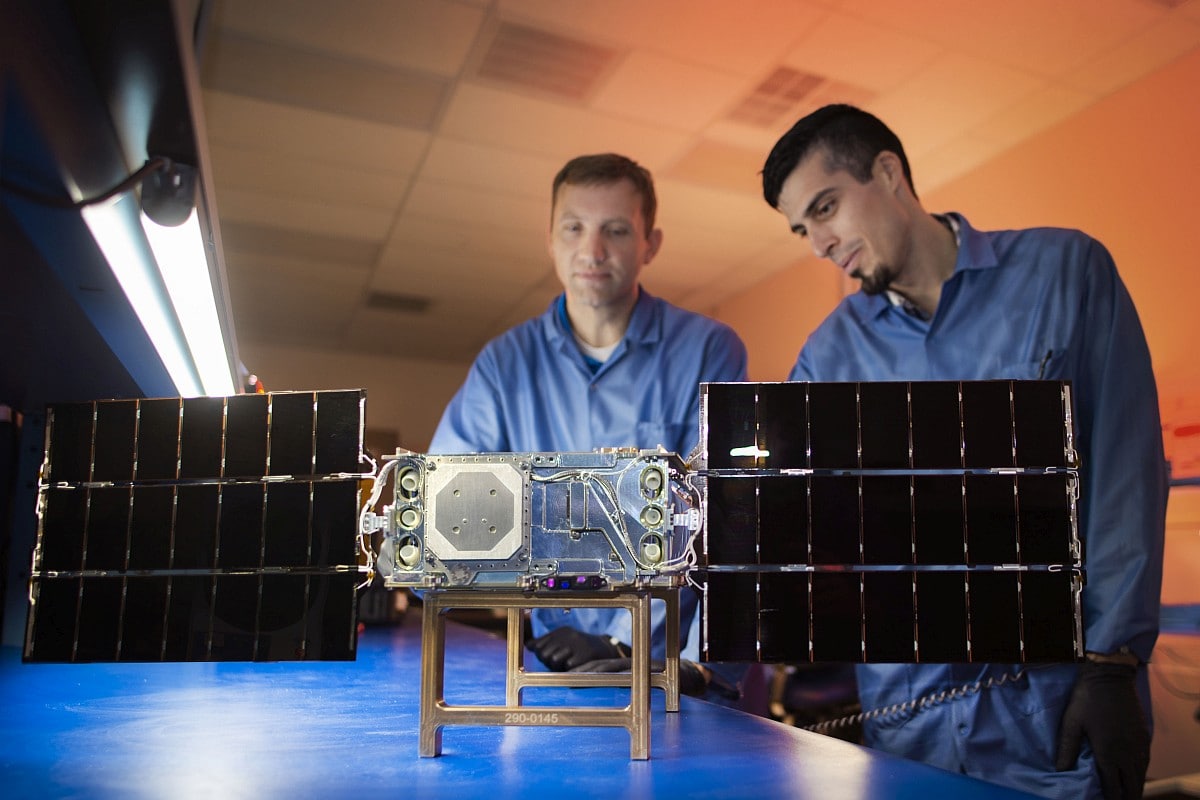NASA’s SunRISE — or Sun Radio Interferometer Space Experiment — is an ambitious program that plans to launch the largest radio telescope ever to detect and track hazardous explosive space weather events. The production of the first six satellites has been completed at the Utah State University Space Dynamics Laboratory (SDL), according to the US space agency. The SDL has been contracted to build, test, and commission all six satellites for the mission.
Anticipated for a launch in 2024, NASA’s SunRISE will be a radio telescope in an orbit that will enable scientists to understand explosive space weather events. It will use the combined power of six toaster-size satellites to observe the Sun in a way that so far has been “impossible” from Earth’s surface.
“It’s really exciting to see the space vehicles coming together,” said Jim Lux, SunRISE project manager at NASA’s Jet Propulsion Laboratory (JPL) in Southern California.
Each small satellite or SmallSat used in the SunRISE project will function as an individual to detect bursts of radio waves from the Sun’s superheated atmosphere, known as the corona. The satellites, equipped with four telescoping antenna booms that extend about 10 feet (2.5 meters) to form an “X,” will orbit Earth at about 22,000 miles (36,000 kilometres) away, while moving together to trace out a virtual radio telescope.
The signals, received from the six SmallSats via NASA’s Deep Space Network, will be used by scientists to create a large-aperture radio telescope as wide as the distance between the SmallSats that are farthest apart — about 6 miles (10 kilometres), using the technique of interferometry
Unlike many ground-based radio telescopes that also use interferometry to combine the observing power of many individual antennas, SunRISE will be able to see the long wavelengths that are blocked by a portion of Earth’s upper atmosphere, known as the ionosphere.
This means it can pinpoint where solar radio bursts, or sudden event-type emissions of radio waves, erupt higher up in the Sun’s corona. The data will be used by the SunRISE team to create detailed maps of their positions in 3D.
“These high-energy solar particles can jeopardise unprotected astronauts and technology. By tracking the radio bursts associated with these events, we can be better prepared and informed,” said Justin Kasper, SunRISE principal investigator at the University of Michigan in Ann Arbor.
The observation from SunRISE will be used by NASA in conjunction with data from other space missions and ground-based observatories.
